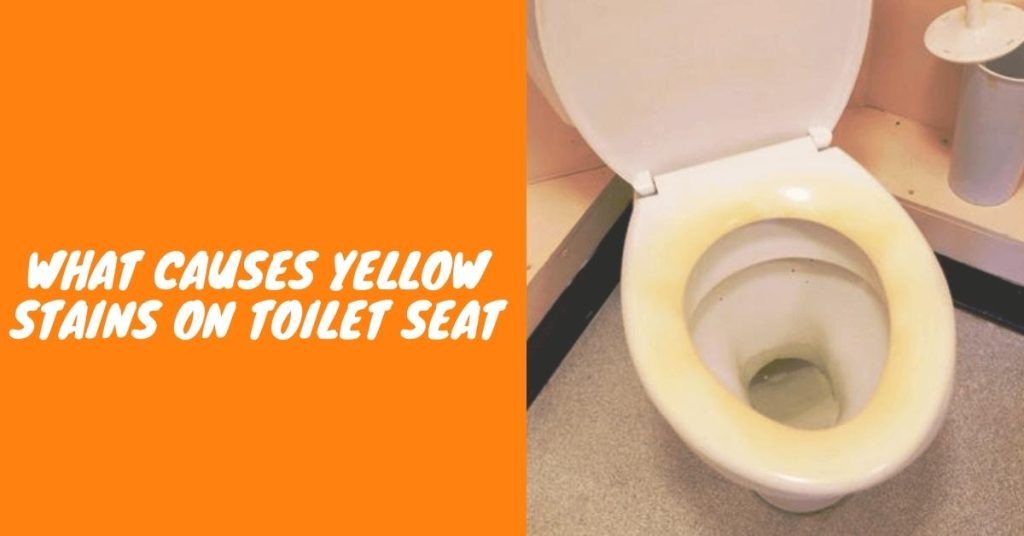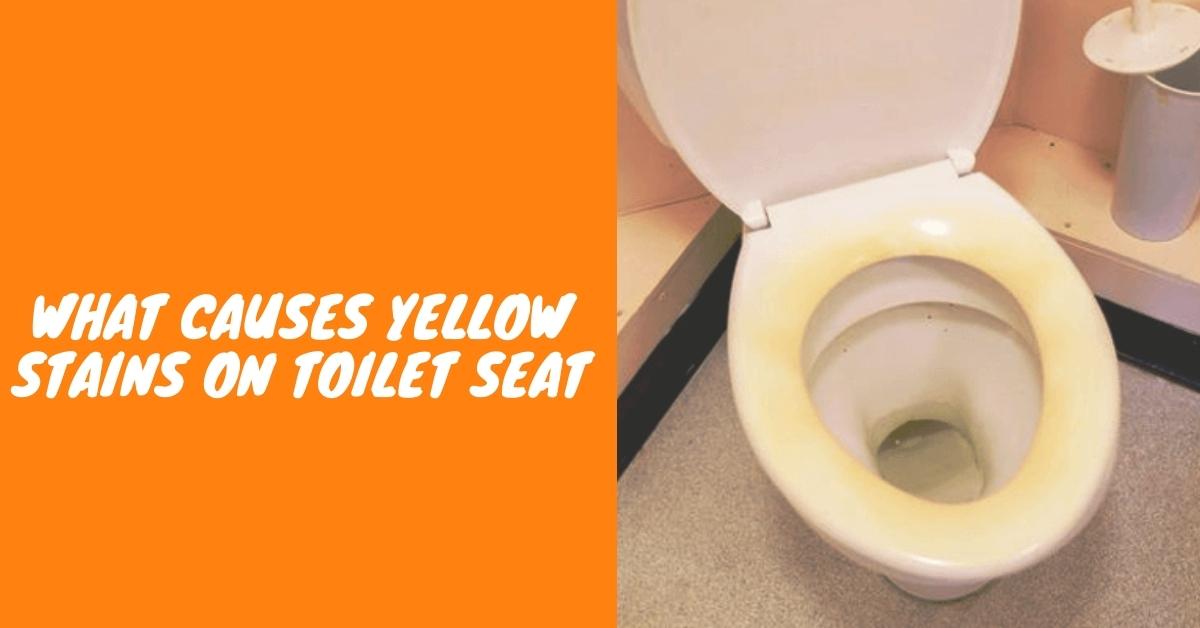A yellow-stained toilet seat can be an unsightly and puzzling issue that many people encounter in their bathrooms. These stains can leave an unpleasant impression and raise questions about their origin and how to effectively remove them.
While toilet seats are designed to be durable and easy to clean, yellow stains can still appear over time, and understanding their causes is crucial in order to address the issue effectively.
In this article, we will explore the various factors that can contribute to yellow stains on toilet seats, ranging from hard water mineral deposits, to urine stains, to cleaning product residues, and discuss potential solutions to restore your toilet seat to its original cleanliness and appearance.
What are The Causes of Yellow Stains on The Toilet Seat?

Yellow colors don’t necessarily mean that the toilet seat is dirty. However, none wants to use a stained toilet & we should know when to give up on cleaning & get a new one.
To prevent these stains from appearing, we first need to know their causes. Let’s see then.
1. Urine stains
The yellow stains on your toilet seats are most likely from urine. When urine comes in contact with water, ammonia salts break down into ammonium hydroxide, breaking down organic matter like bacteria, and fungi on the toilet seat.
After some time, the toilet seat may develop yellow stains from high uric acid concentrations. Flush the toilet every time. Everyone should clean up the toilet seat and lid properly after every use.
2. Hard water
Hard water also causes yellow stains on toilet seats, and the reason behind this can be a build-up of calcium and other minerals that can accumulate over time on the toilet seat. To get rid of this, you can use fresh water.
3. Sun exposure
Open sunlight causing yellow stains is rare. Sunlight containing UV rays is responsible for sunburn on toilet seats that eventually turn the white color into yellow. So, to prevent sunburn, sunlight should not directly fall on your toilet seat.
4. Overtime
Using a toilet seat for a very long time can also cause yellow stains. So, changing a toilet seat after using it for many years is the only prevention.
5. Use of bleach
Sometimes, the use of bleach becomes the reason for yellow stains. Though bleach is a great disinfectant, it can discolor plastic toilet seats if the bleach is not a good one or in an undiluted state. So, trying a new brand or diluting it more before using it can be effective prevention.
How to Remove Yellow Stains on The Toilet Seat?

As we have discussed the causes of yellow stains on toilet seats, now it’s time we find some solutions to our problems. Once the yellow colors are already visible, we should take quick actions to eliminate them. Let’s have a glimpse at some tips for removing yellow stains on the toilet seat.
DIY Yellow Stains Removal
- Rub the sheet repeatedly with vinegar until the stains disappear. Later, wipe everything off with a clean rag.
- Spread a mixture of ¼ cup of baking soda and ½ cup of warm water on the dirty part of the toilet seat, leave it for 20 minutes, wash the part with a sponge, spray the surface with detergent and wipe it clean again after 10 minutes.
- Spread a foamy paste from a ¼ cup mixture of both ingredients throughout the sheet. After 10 minutes, wipe with clean water.
Other Methods of Yellow Stain Removal
- Sprinkle borax powder over the stains, and begin scrubbing the seat with a brush. Wash it off after 30 minutes.
- Mix about 4 liters of warm water and one tablespoon of trisodium phosphate. Wipe the toilet seat down with the mixture.
- If it’s a stain from overtime or a color that cannot be washed off using the above methods, you need to get rid of the old toilet seat and buy a new one.
How Often Should You Clean a Toilet?

You should clean the toilet at least once to keep it free of E. Coli bacteria. However, the toilet seat needs to be cleaned after every use, and the lid should be adequately maintained and clean.
Also, everyone must flush the toilet after using it every time. You must remember that urine is not water & if we don’t flush the toilet after urinating, it will leave stains.
So, except for cleaning the bathroom entirely once a week, everyone should take care of the things like the seat cover or lid after every use.
Final Words
Yellow stains on toilet seats can be caused by a variety of factors, ranging from hard water deposits to urine stains and cleaning product residues. Understanding the root causes of these stains can help you effectively address and prevent them, keeping your bathroom looking clean and well-maintained.
Whether it’s using vinegar or lemon juice to remove hard water stains, regularly cleaning and disinfecting your toilet seat, or using protective covers, there are various strategies you can employ to tackle yellow stains on your toilet seat.
Remember to follow proper cleaning practices and use appropriate cleaning agents to avoid damaging your toilet seat or harming your health. We hope this article has provided valuable insights and solutions to help you keep your toilet seat free from unsightly yellow stains. With proper care and maintenance, you can maintain a sparkling and stain-free toilet seat in your bathroom.
Frequently Asked Questions
What is Urine Scale?
Uric acid is a complex deposit of urine and rinses water combined. Over time, the urinals and the urine that collects under the urinals can form uric acid mixed with lime in hard water.
This causes bacterial growth, clogging, and foul odors in many washrooms and in many bathrooms. Once the tile grout or pipes have penetrated the ground and clogged, it may seem impossible to get rid of the sights and odors.









